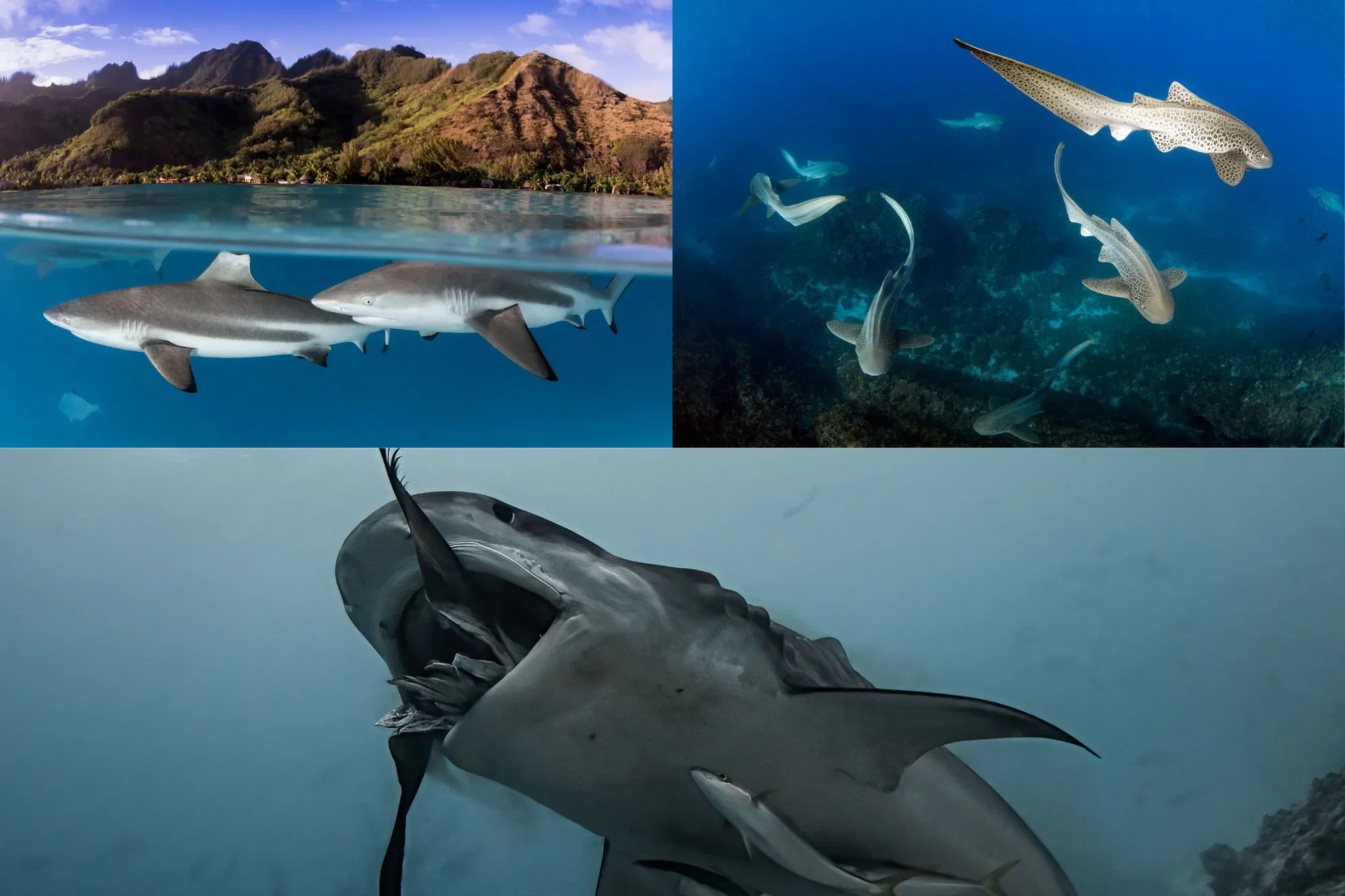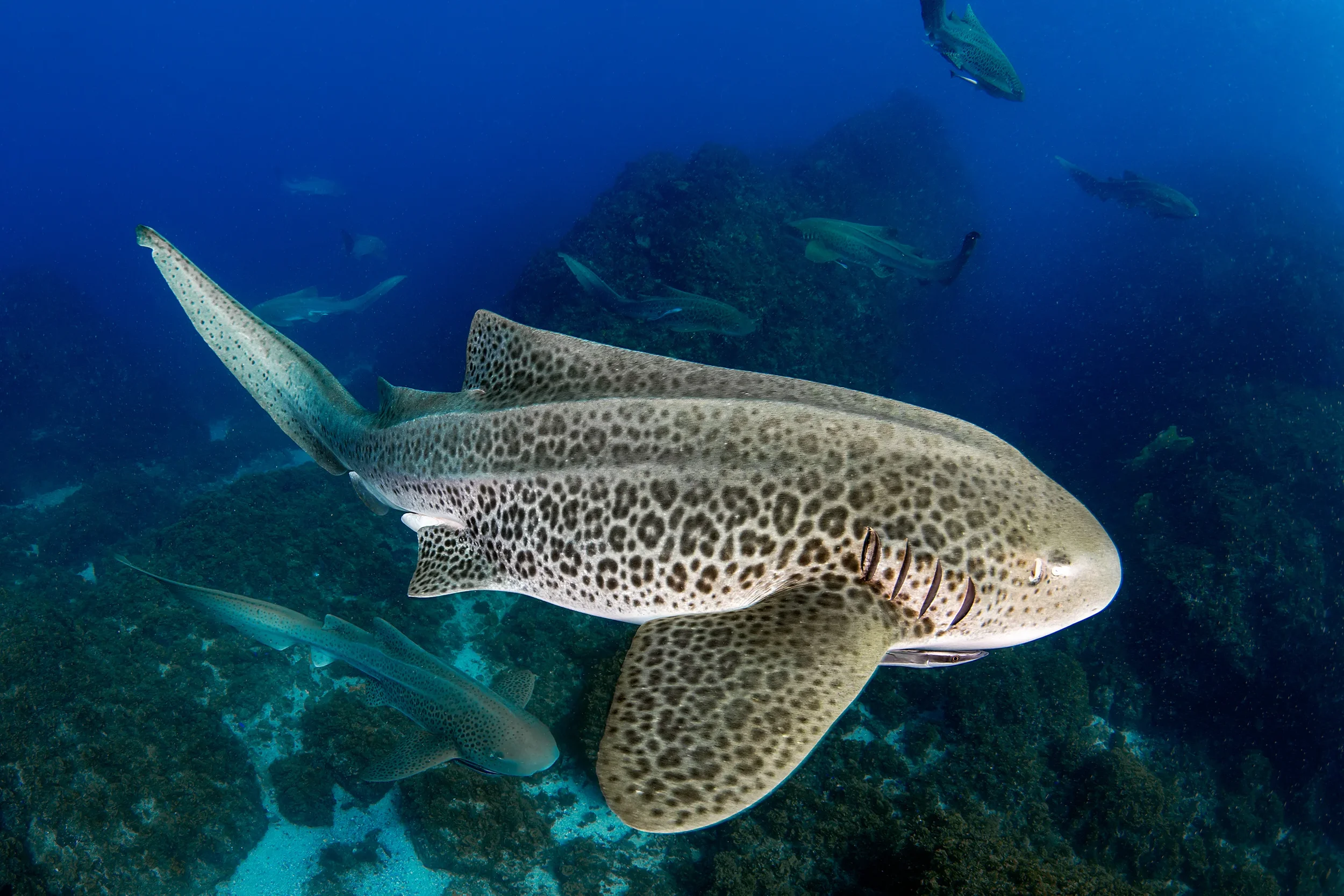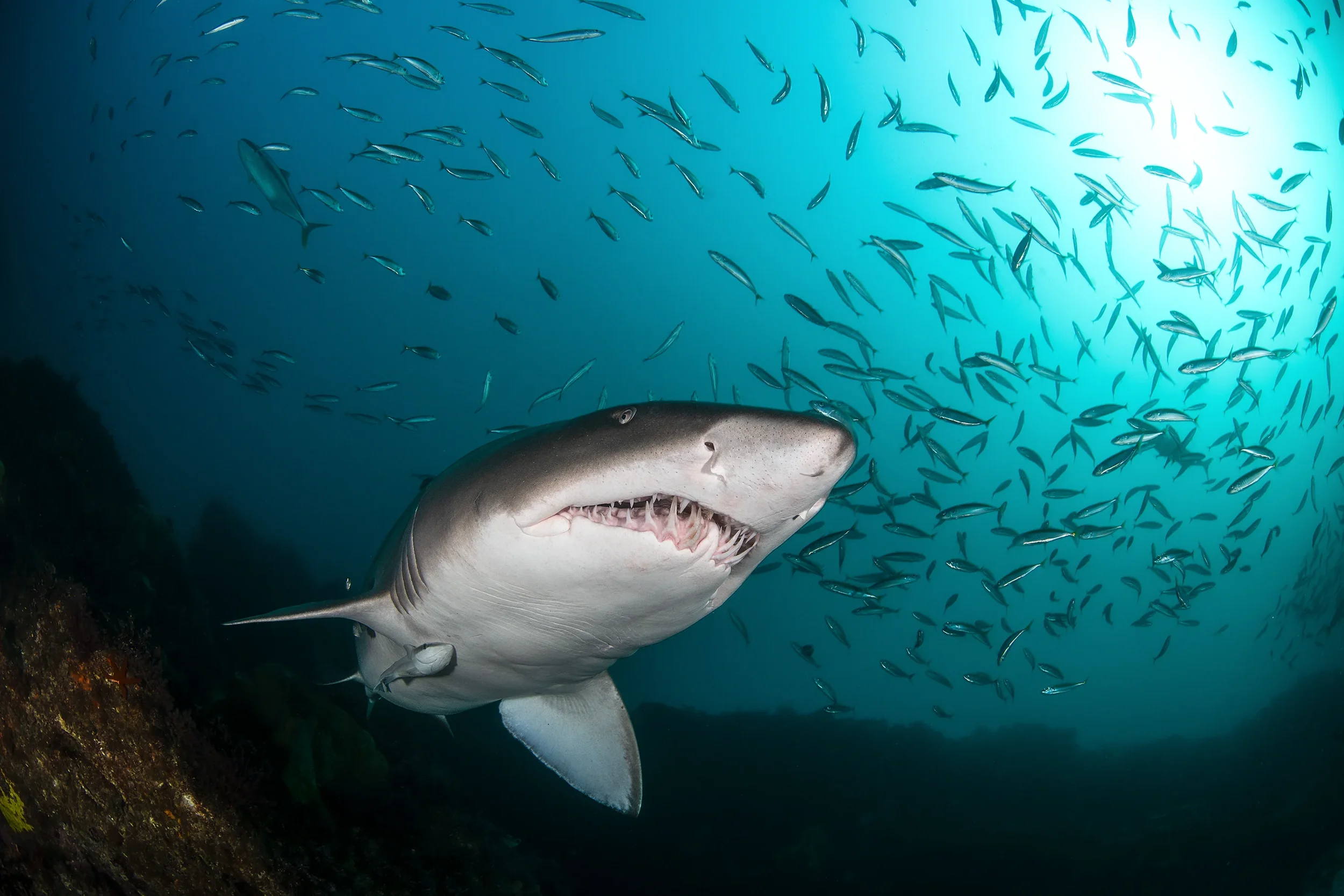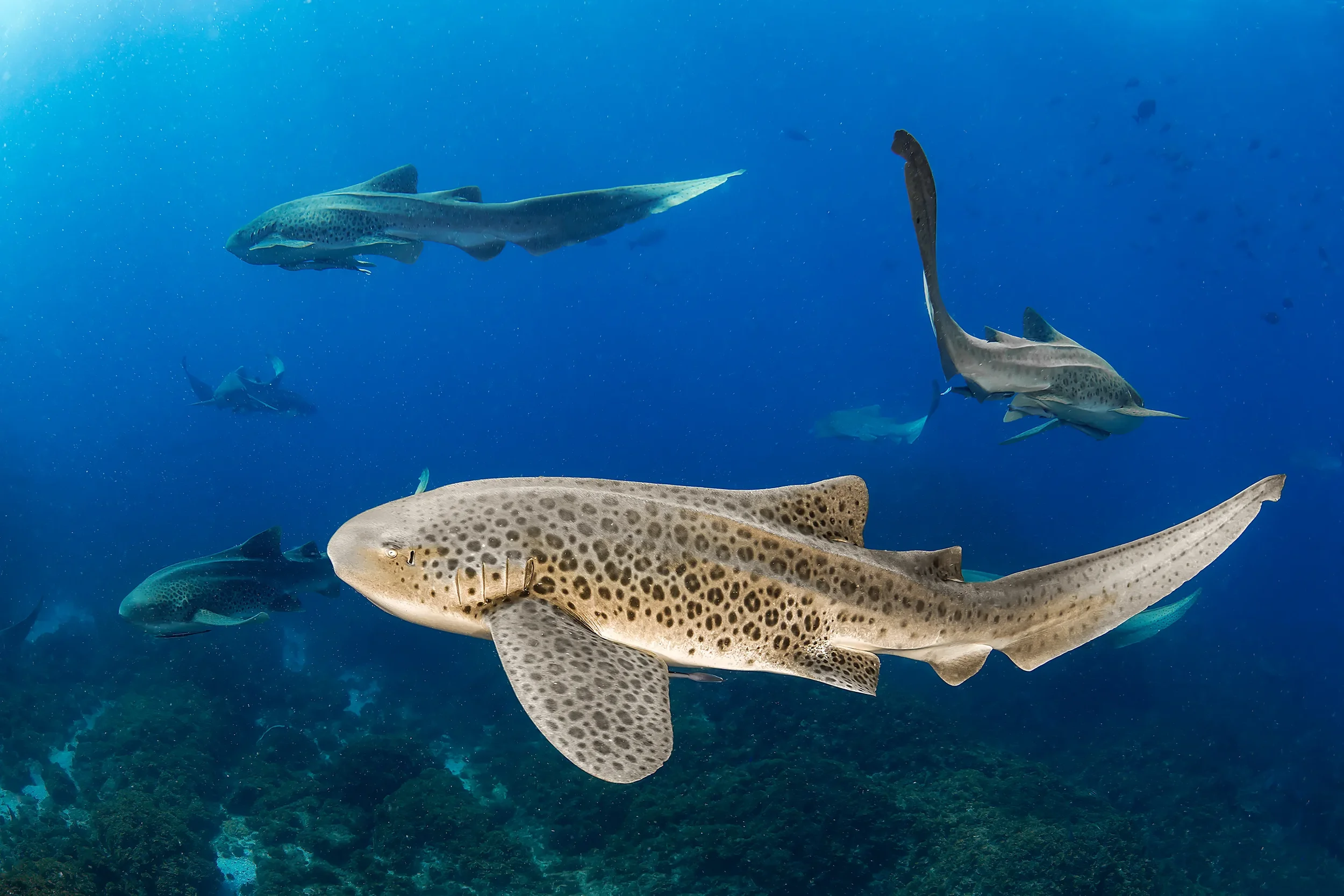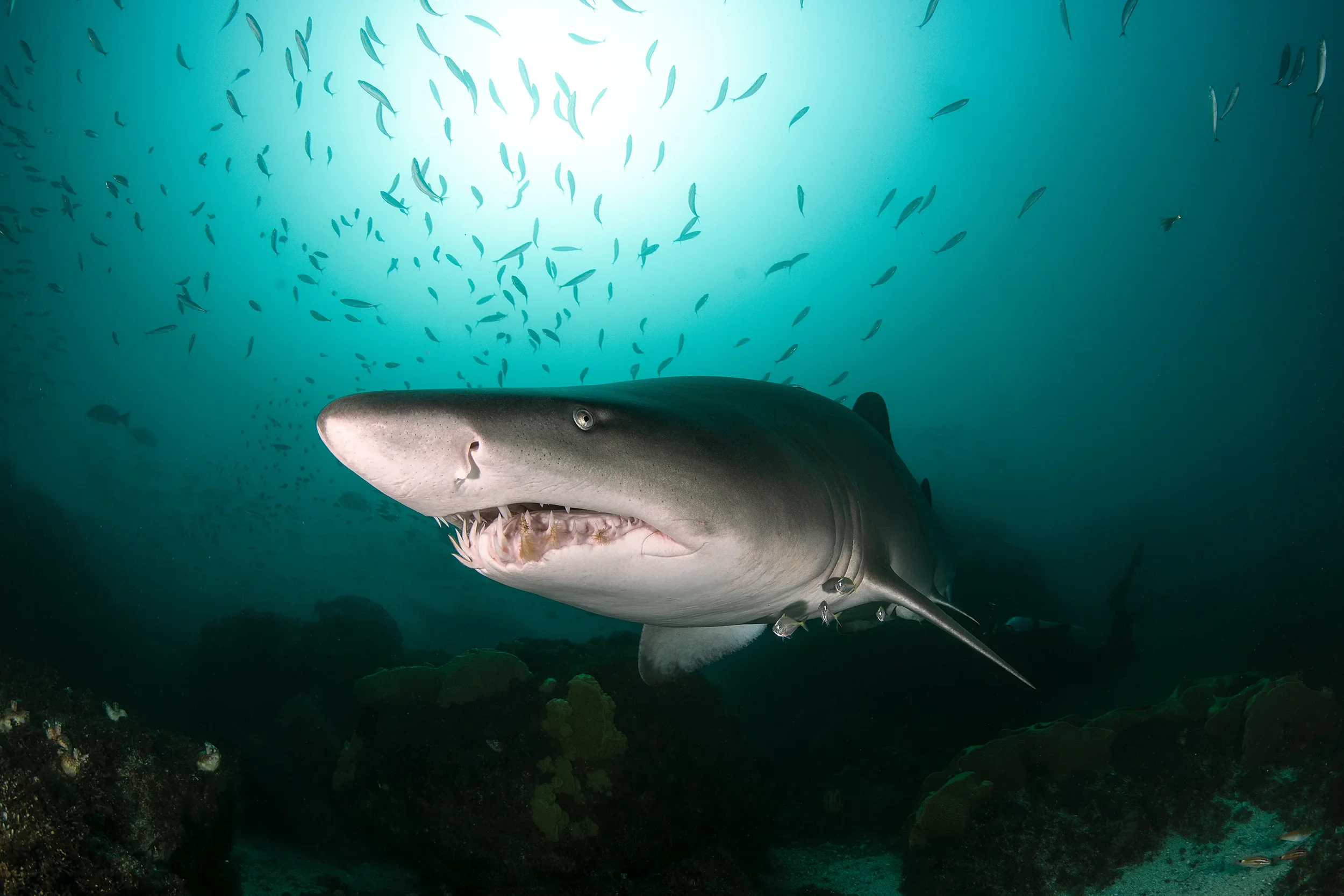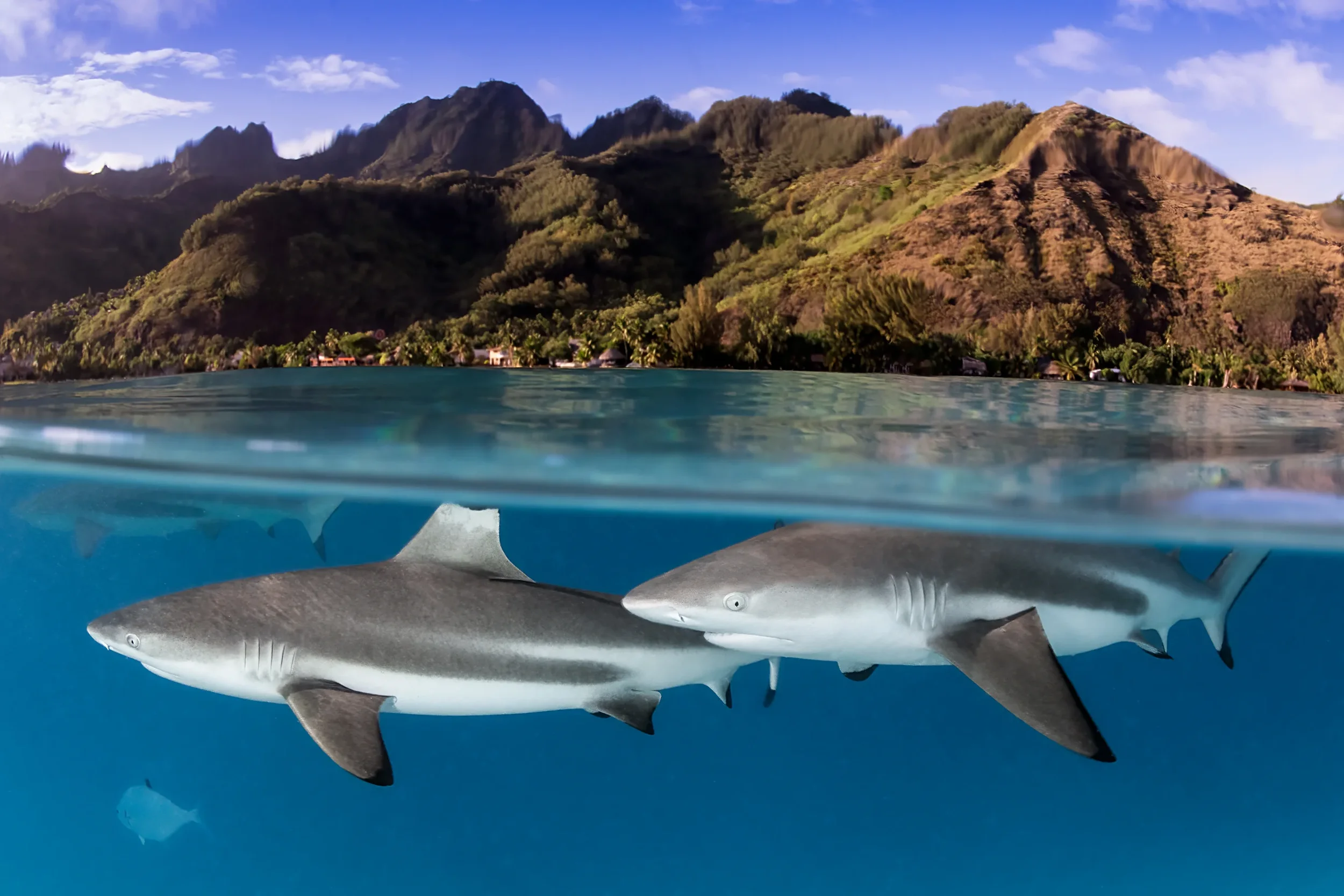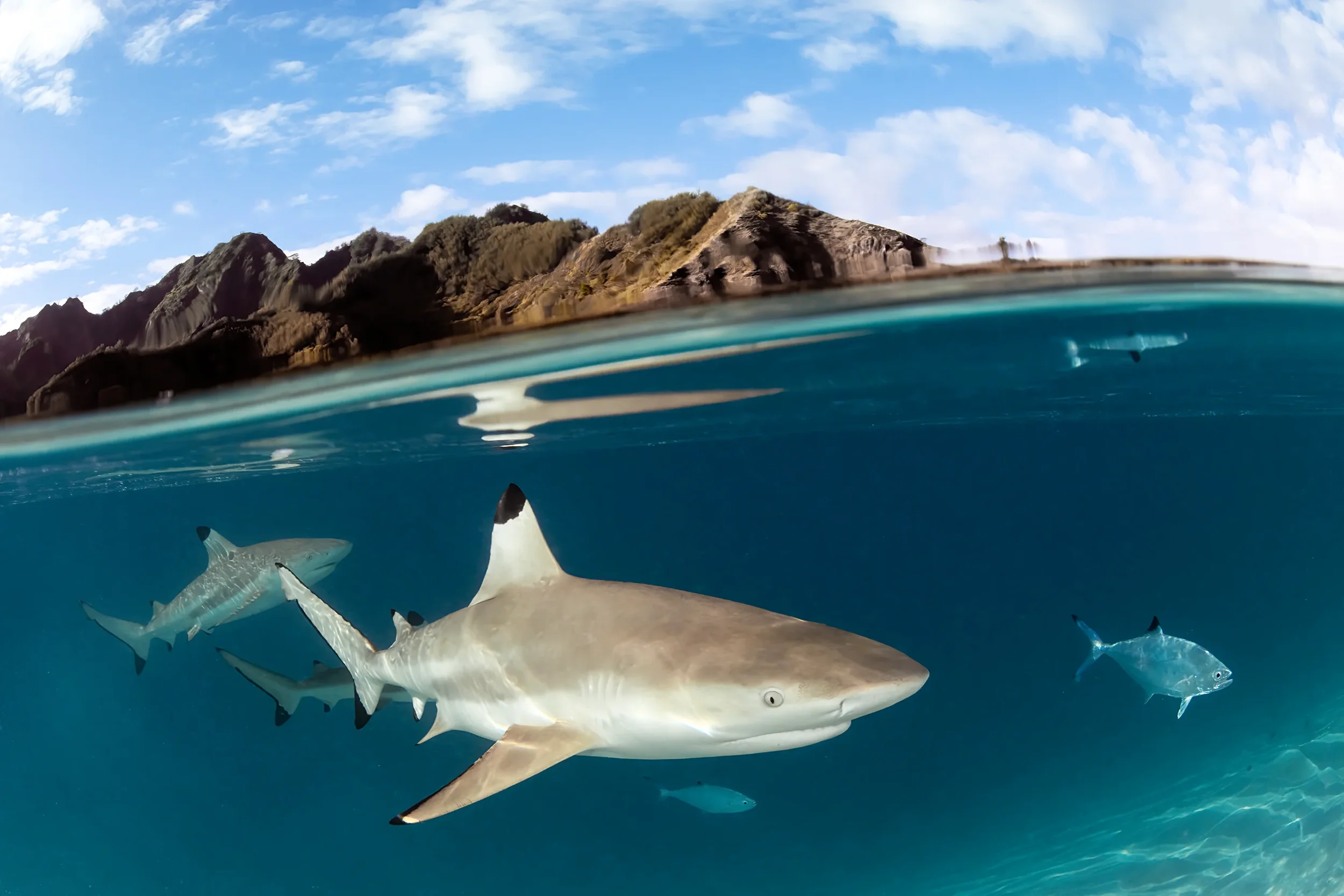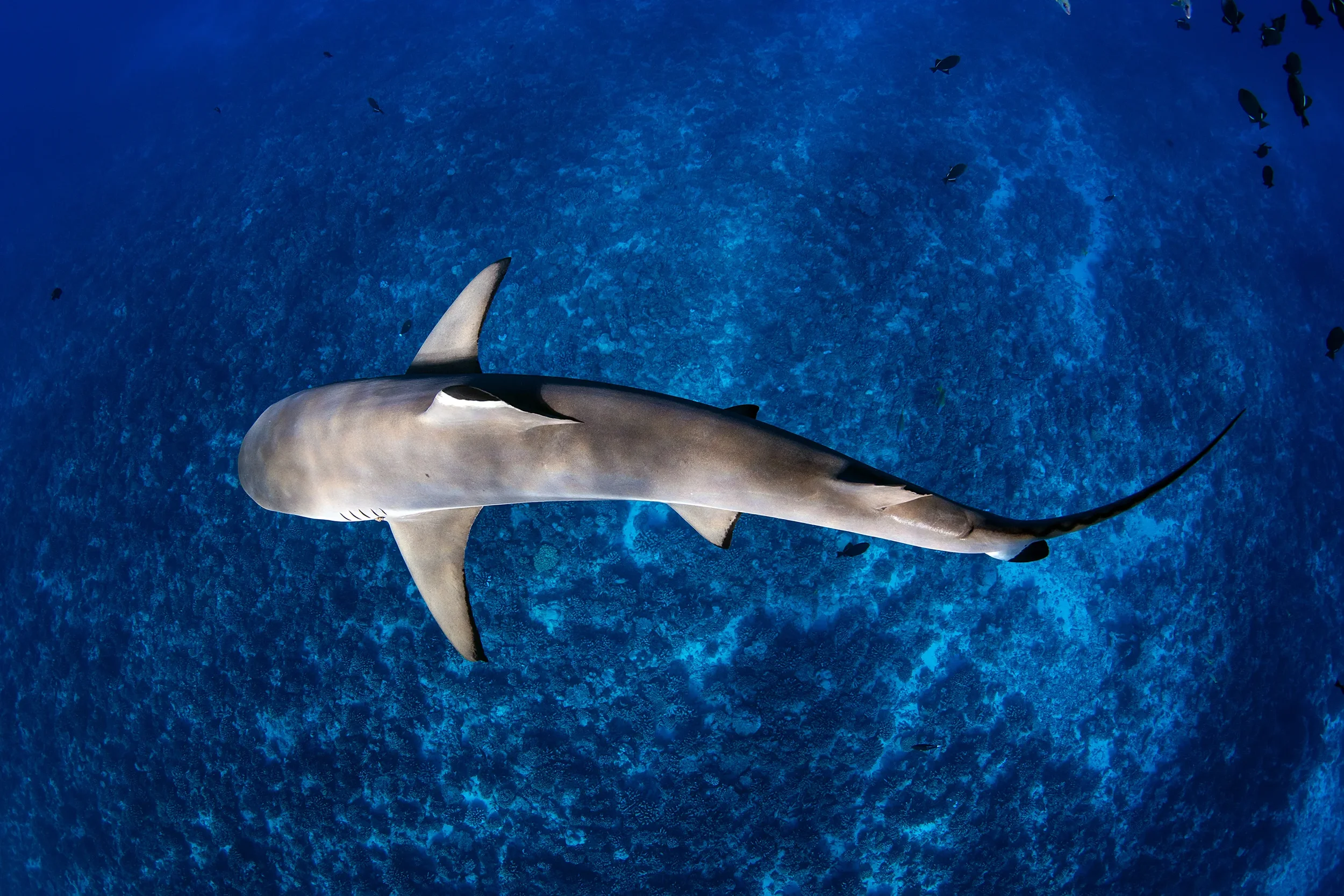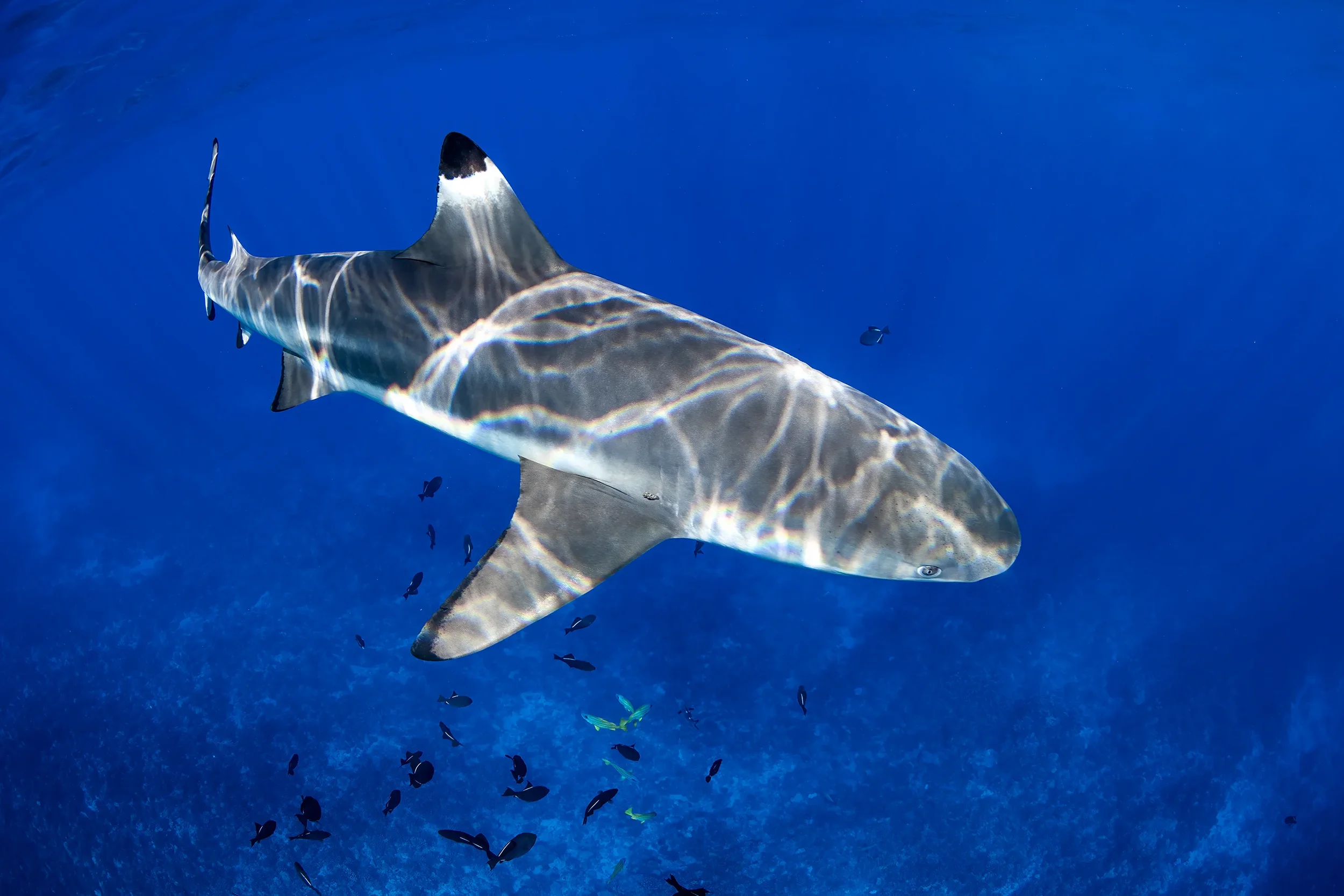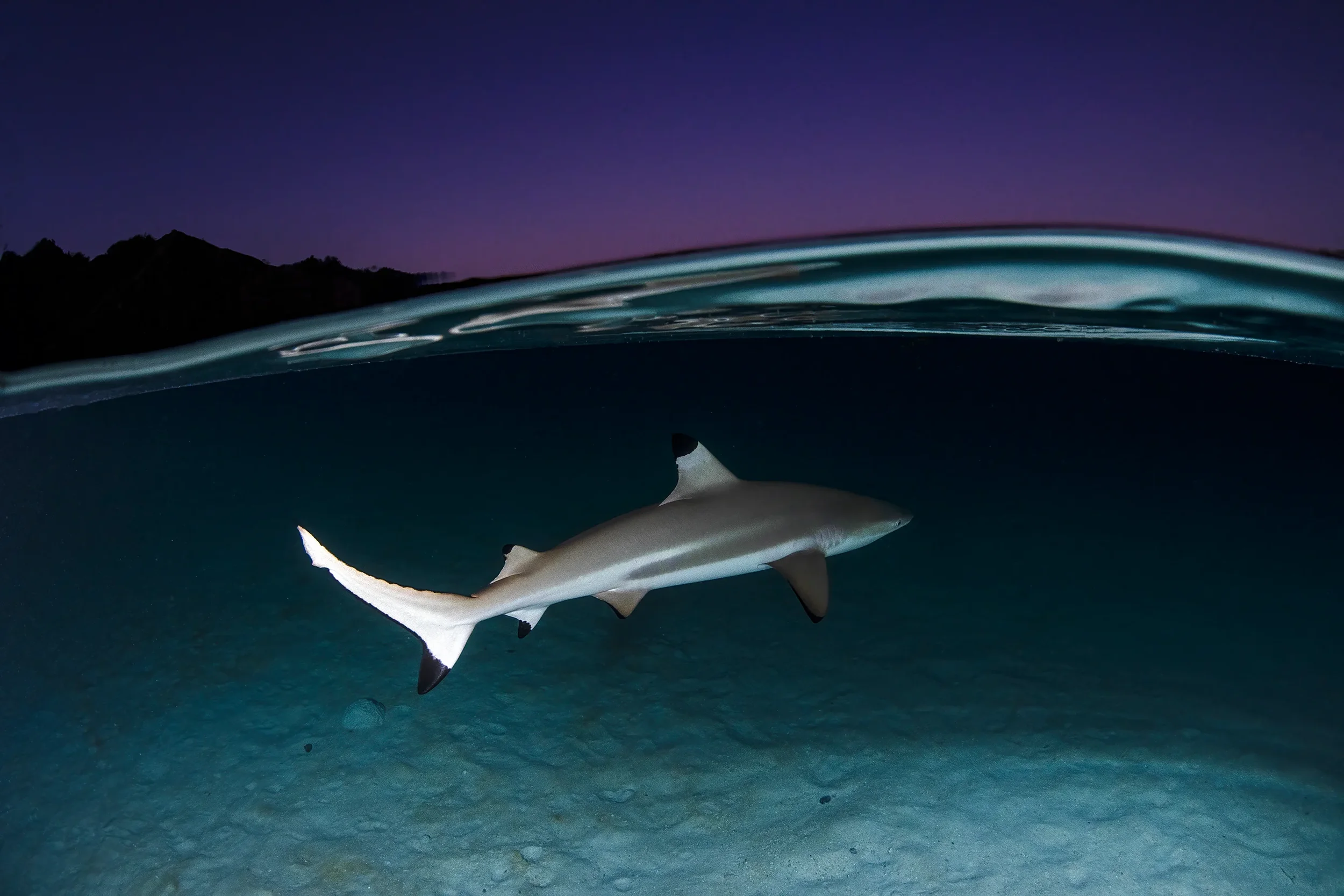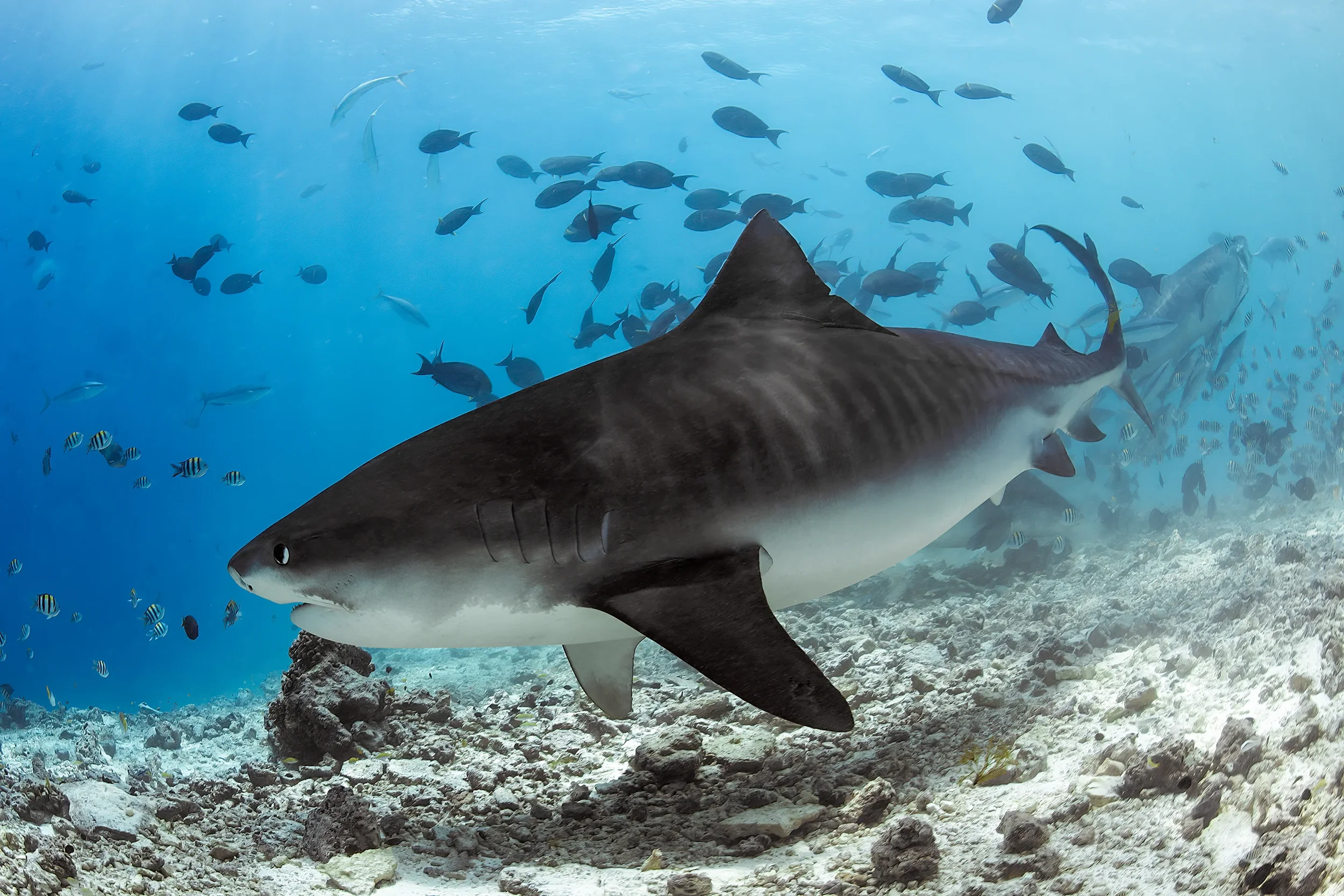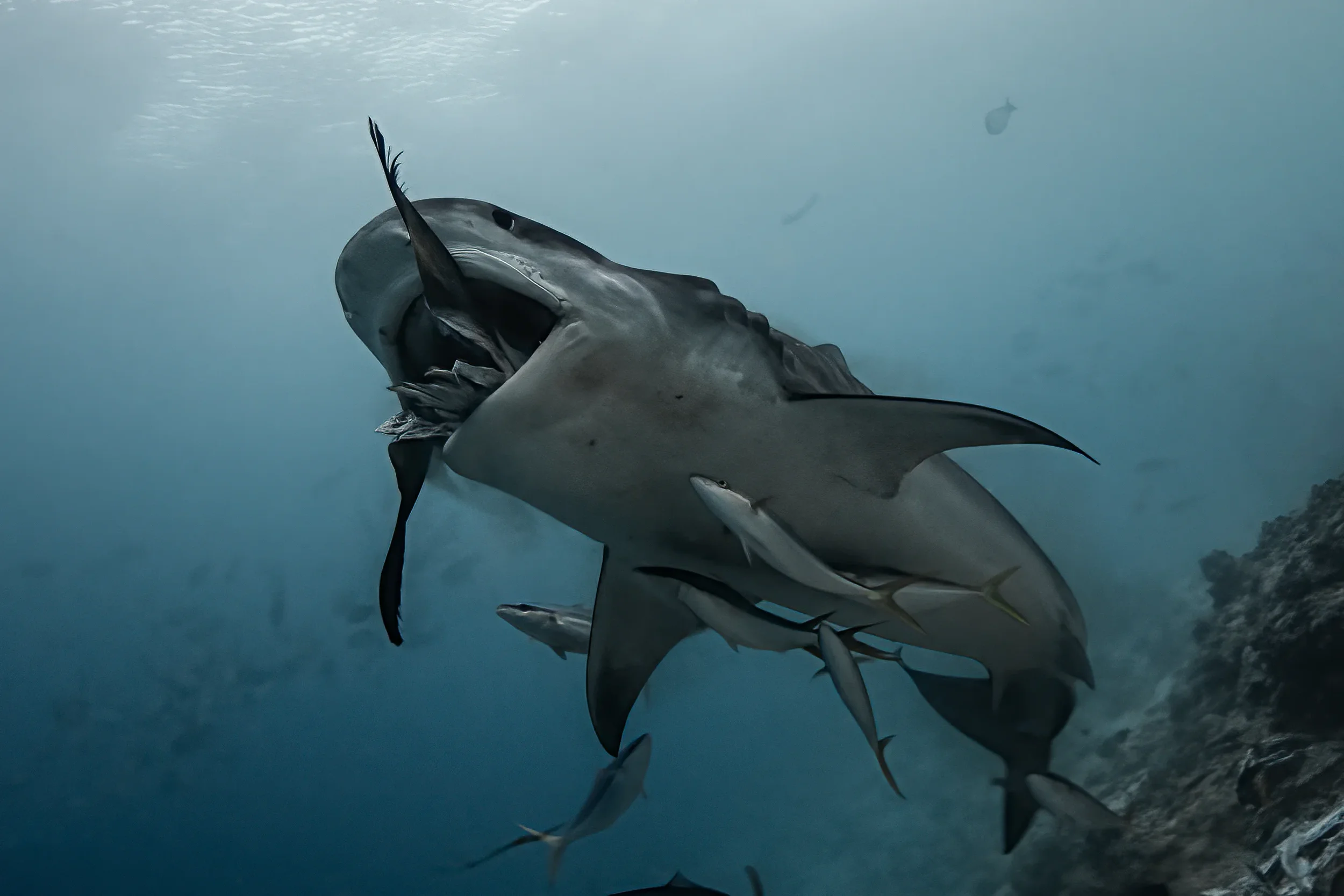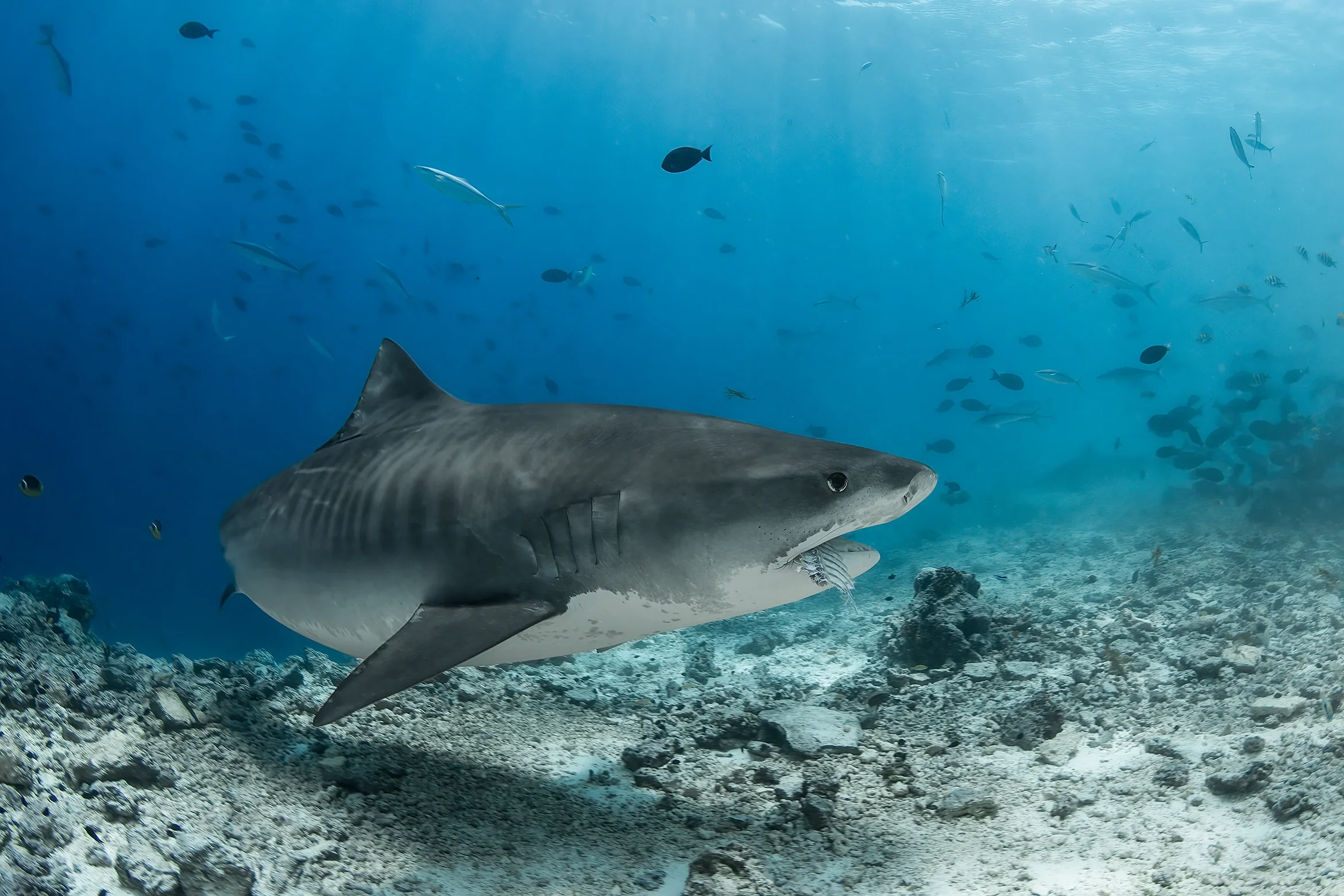Ultimate Shark Diving Bucket List: Part 2
A few months ago, I had the idea to create a list of my all-time favourite shark diving destinations, which has since turned into a series of blog posts. In Part 1, I highlighted Tiger Beach and Cat Island in The Bahamas for tiger sharks and oceanic white tips, before exploring the insane pelagic shark action off the coast of Cabo San Lucas, Mexico.
For Part 2, I’ve chosen another three destinations, each with their own highlights and key species to find: Nguthungulli Julian Rocks in Australia, Moorea in French Polynesia, and Fuvahmulah in the Maldives.
Nguthungulli Julian Rocks, Australia
If you’ve followed my work for any length of time, you’ll know I spend much of my time underwater at Nguthungulli Julian Rocks, located just a couple of kilometres off the coast of Byron Bay. Julian Rocks is a hotspot for sharks year-round, but it has two key seasons that see an abundance of leopard (aka zebra) sharks in summer, and grey nurse (aka sand tiger) sharks in winter.
When to Visit?
Like many dive sites along Australia’s East Coast, visibility can vary from 5 to 20 metres. But the sheer amount of wildlife—especially sharks—is almost guaranteed if you visit during peak months.
January to April is the best time to experience large numbers of leopard sharks swimming together between the rocky trenches. This is arguably my favourite time of year, as the photographic opportunities are second to none! These sharks prefer shallower water between 5 and 15 metres, allowing for plenty of natural light and vibrant images full of colour and detail. Water temperatures between 24°C and 26°C don’t hurt either!
If grey nurse sharks are your preference, you’ll need to brave the cooler waters between July and October and consider booking a scuba dive (unless you’re a very capable freediver), as these sharks tend to stay in deeper areas—around 15 to 22 metres. The water temperature usually sits between 19°C and 20°C but can drop as low as 18°C in some parts. A 7mm wetsuit or a warm 5mm is recommended.
Leopard Sharks
Leopard sharks are among the most photogenic shark species and are known for their relaxed demeanour—especially during peak season, when their numbers can exceed 20 individuals. When first born, these sharks actually have stripesinstead of spots, which explains their other common name: zebra sharks. As they grow, the stripes break apart into the stunning spotted pattern we see in adults.
If you’re lucky enough to dive Julian Rocks during leopard shark season, remember to experiment with different compositions—top-down, bottom-up, tail-first, and so on. These sharks really don’t have a bad angle!
Grey Nurse Sharks
While they may not be quite as “pretty,” grey nurse sharks are equally photogenic—just in a different way. They’re known for the fearsome teeth protruding from their jaws as they glide slowly above the seafloor. Despite their appearance, it’s important to understand that this species poses no threat to divers and are actually quite shy unless approached carefully.
To facilitate the closest encounters with grey nurse sharks at Julian Rocks, keep low to the bottom, avoid direct eye contact as they approach, and minimise excessive bubble-blowing. Stay calm and still, and you may find these sharks swimming just inches from your camera—resulting in some fantastic images.
Moorea, French Polynesia
Moorea, in the tropical island nation of French Polynesia, is world-renowned as a humpback whale hotspot—and while that’s absolutely true, it’s also an amazing destination to photograph blacktip reef sharks.
Now, you might be asking, “What’s so special about blacktip reef sharks?” My answer: nothing in particular... BUT, it’s more about the environment in which you encounter them that makes it so unique. On the northeastern side of the island lies a shallow, crystal-clear turquoise lagoon teeming with blacktip reef sharks—set against the backdrop of tropical green mountains. It’s a perfect recipe for split-level images.
Getting to the Blacktip Lagoon
The best part about snorkelling with the blacktip reef sharks in Moorea is how easy it is to reach them from the beach. If you’re planning any ocean tours (like humpback swims or offshore marine safaris), it’s highly likely your operator will include the blacktip lagoon in the itinerary.
However, if you want to maximise your time in the water and avoid feeling rushed, you can hire a kayak from a small dive shop in front of Les Tipaniers Hotel—one of the closest hotels to the lagoon—and paddle out yourself. It takes just 5 to 10 minutes, and there are several moorings available.
When to Visit?
If you’re only interested in seeing blacktip reef sharks, you can visit Moorea any time of year and expect to see large numbers. However, I recommend visiting during peak humpback whale season from August to October—you might as well experience some of the larger, offshore species too!
Blacktip Reef Sharks
Blacktip reef sharks are beautiful and are considered very safe to dive with—even for beginners. They typically keep a respectful distance unless stimulated by splashing or other cues. Their iconic black-tipped dorsal fins make them easy to identify and add a nice point of interest for composing images.
While the lagoon is the most popular spot to encounter them, blacktips can also be found on the outer reef in deeper, blue water.
Other Species
Blacktip reef sharks are guaranteed in the lagoon, but if you’re exploring the pelagic zone offshore, keep your eyes peeled! It’s not uncommon to spot oceanic white tips following pilot whales, and there are even occasional encounters with tiger sharks and whale sharks.
Hot Tip!
Paddle out to the blacktip lagoon in the early morning or stay out a little later for sunrise or sunset. Shooting split images during these times is always worth the effort to take advantage of the spectacular colours in the sky.
Fuvahmulah, Maldives
Fuvahmulah, in the southern Maldives, has become one of the world’s top destinations to encounter tiger sharks, as well as other species like scalloped hammerheads and thresher sharks. While the hammerheads and threshers are less reliable (or only seen in very deep water), the tiger sharks are not only guaranteed, but often found as shallow as 8 metres! Whether scuba diving or freediving, Fuvahmulah offers an incredible chance to experience large tiger sharks up close—and it’s absolutely worth a visit.
Welcome to Tiger Zoo
Tiger Zoo is the island’s main dive site and practically guarantees close tiger shark encounters. The sharks aren’t actively fed, but discarded fish scraps are used to keep them interested, allowing for amazing viewing opportunities.
The site is located just outside the boat harbour, making access quick and easy. Visibility typically ranges between 10 and 20+ metres, depending on how much sand is stirred up.
A typical dive at Tiger Zoo is highly structured: scuba divers descend to the bottom and form a line. Compared to places like Tiger Beach in The Bahamas, Fuvahmulah offers less freedom in terms of movement and interaction—but the photographic opportunities are still fantastic!
Fuvahmulah vs Tiger Beach (Bahamas)
In my opinion, the two premier tiger shark diving destinations in the world are Fuvahmulah and Tiger Beach in The Bahamas—each with its own pros and cons.
Having dived both, I found that Tiger Beach is unmatched when it comes to creative freedom and pure shark photography. However, what Fuvahmulah lacks in flexibility, it makes up for in cost and an impressive variety of species.
When I visited in 2018, I saw thresher sharks, hammerheads, whale sharks, and even oceanic manta rays. So, if your goal is to maximise your time photographing tiger sharks in every possible way—and your budget allows—go for Tiger Beach.
But if you're looking for a slightly more affordable option with the chance to see other amazing species as well, consider Fuvahmulah.
Final Thoughts
There you have it—Part 2 of my Ultimate Shark Diving Bucket List. I hope you’ve enjoyed the series so far! If you haven’t read Part 1, be sure to check it out.
Have a shark diving destination I haven’t mentioned yet? Drop it in the comments below—I’d love to hear from you!

